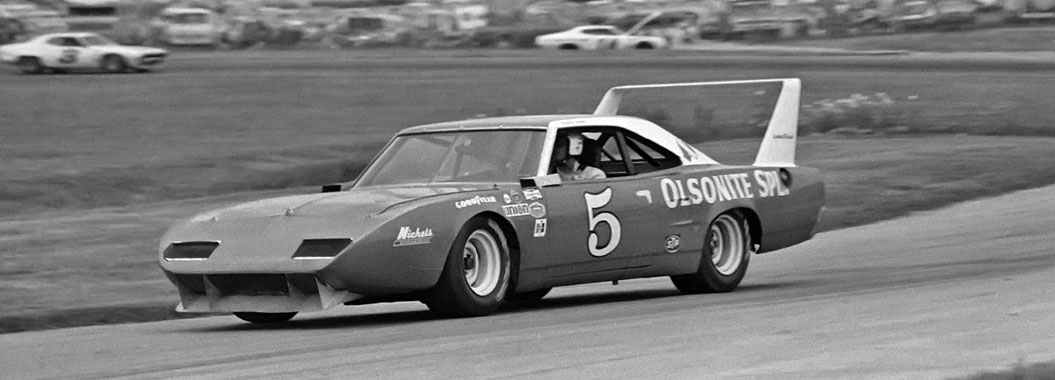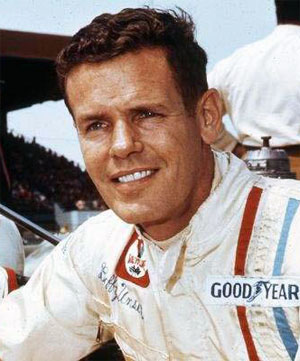Robert William “Bobby” Unser (born 20 February 1934 – 2 May 2021) is an American former automobile racer.
He is the brother of Al Unser, Jerry Unser and Louis Unser, the father of Robby Unser and the uncle of Al Unser Jr. and Johnny Unser. The Unser family has won the Indy 500 a record nine times. He is one of ten drivers to win the Indianapolis 500 three or more times and one of only two (followed by Rick Mears) to have won the 500 in three different decades (1968, 1975, 1981). Bobby has also been a spokesman and advocate of many commercial products. Info from Wiki
Bio by Stephen Latham
Like a number of drivers who had impressive careers and numerous exploits, trying to edit this piece on Bobby Unser down to a version that wasn’t like a long novel was tricky so I’ve posted it in two parts. Apologies if some racing has been missed but Bobby did a LOT of racing and winning!
Although posted as a ‘forgotten driver in F1’, Bobby Unser has one of the most impressive records in American racing history: the first driver to record a 200 mph qualifying average speed in Indy car competition, 35 Indy car wins, 49 Indy car pole positions, eight Indy 500 victories, 4 International Race of Champions (IROC) wins and 13 Pikes Peak Hill Climb wins.
One of three sons of a garage owner, he raced his father’s modified stock cars from the age of 15 and, after becoming State champion in 1950 and 1951, switched to midgets and then stock cars.
At the age of 17 he competed in the Carrera Pan Americana (with his father as navigator), and at the legendary Pikes Peak hillclimb, he won in the Indycar class in the 1956 event and continued a family tradition of success that had been set by uncle Louie Unser, who had won it nine times.
Further success in hillclimb and sprint car continued into the 1960s and he made his debut in the Indianapolis 500 in 1963, in a Kurtis-Novi. Bobby was the second of the Unser brothers to compete at Indianapolis, as Jerry competed in the 1958 race (miraculously surviving a 13 car crash that sent his car tumbling over one of the turn walls) though he was sadly killed while practising for 1959’s race.
In 1964 and 65’s Indy 500 races, he raced a Ferguson 4wd drive car. Team boss Andy Granatelli had a Ferguson P99 shipped over and tested there (driven by Jack Fairman), and after proving quick and stable through the turns he commissioned Ferguson Research to build him a 4WD front-engined chassis for the 1964 Indy 500. Bobby drove the STP Corporation car but was embroiled in a second-lap disaster which claimed the lives of two drivers (Eddie Sachs and Dave MacDonald). Returning for the following year’s race, he qualified eighth in the STP Novi-Ferguson but his race ended due to an oil leak.
In 1967 he drove an Eagle-Ford for A.J.Watson’s Leader Card Racers, winning both races at Mosport Park and finishing third in the standings.
1968 saw him race his Rislone Eagle to victory in three of the first four races and victory at Pikes Peak gave him his first Indycar title. He took his first Indy 500 victory, despite a strong challenge from the STP-Lotus turbine cars, and the Eagle-Offenhauser was the first turbocharged car to win the 500. Paul Newman’s ‘Winning’ movie was made during the year and Bobby’s car doubled as Newman’s car in the movie. He also entered two F1 Grands Prix with BRM that year, though wasn’t allowed to start at Monza as he had raced a day earlier at the Indiana State Fairgrounds and during the US GP at Watkins Glen his P138’s engine failed.
1969 saw him race for two seasons with Leader Card, finishing second to his brother in 1970. In 1971, when Dan Gurney retired from driving, Bobby replaced him at All American Racers and he started from pole position in all but two races during 1972 and won four races. At that year’s Indy 500 his qualifying speed in the new Eagle-Offy was 17 mph faster than the year before although an ignition rotor failure put him out of the race. During this time he also raced in IROC plus drove a Nichels Engineering Superbird in USAC Stock Car in 1972.
In 1974 he finished in the top five in all but one race, with four victories and second place at Indy leading to him taking his second Indycar title. Speaking of the power from the Offenhauser turbocharged engine in the Eagle, he stated “when you stepped on that throttle, you better know where you’re going, ‘cause that things gonna go.”
The following year saw him win the Indy 500 again, after heavy rain caused the race to be stopped after 174 laps and he then moved to Fletcher Racing for two seasons. 1978 saw him return to All American Racers and from there he joined Penske Racing, helping develop their PC7 chassis, and the team finished 1-2 in the series with Bobby finished second to team-mate Rick Mears.
He was second again in 1980 but his victory at Indy in 1981 was overshadowed by controversy. He won the race from pole, with Mario Andretti second, but it was declared he had passed cars illegally while exiting the pit area during a caution and was subsequently issued a one-position penalty. He was dropped to second place and Mario declared the race winner but after a lengthy protest and appeals process, the penalty was rescinded, and he was reinstated the victory.
There were plans to drive for Patrick Racing in 1983 but a change of mind saw him decide to retire.
Following retirement, as well as working in television (for ABC, ESPN and NBC), he became a development driver for Audi, lapping one at 206.8 mph. After a twelve year absence he won 1986’s Pikes Peak for a 10th time in an Audi Quattro S1, which brought his total number of victories there to 13, including two stock car class victories (1969 and 1974) and a sports car class win in 1963.
He also broadcast several NASCAR events between 1986–1992 and in 1993 won the Fast Masters championship plus at Bonneville set a new salt flats record of 223.709 in a D/Gas Modified Roaster that stood for 18 years.
He was included as one of Sports Illustrated’s ‘Top Five Athletes’ in the magazine’s first twenty years, plus received the Martini & Rossi, and Olsonite, Driver of the Year awards in 1994. He was inducted into the International Motorsports Hall of Fame in 1990, the National Sprint Car Hall of Fame in 1997, the Colorado Sports Hall of Fame in 1997, the Motorsports Hall of Fame of America in 1994 and in 1999 was presented with Indy 500 Front Row Award, 9-time front row qualifier (68, 69, 71, 72, 73, 75, 77, 80, 81).

Gallery F1 Indy and Other F5000





